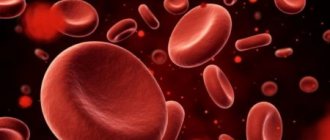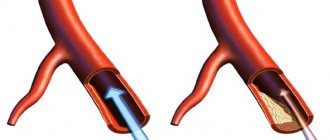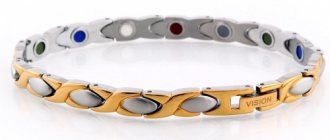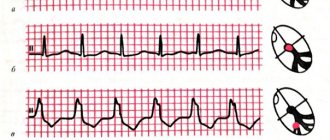Who is a phlebologist
The specialist’s competence includes such common pathologies as:
- Phlebeurysm;
- thrombosis;
- thrombophlebitis;
- trophic ulcers.
This is not the entire list of diseases that a phlebologist cures and diagnoses.
Every 3 people suffer from vein diseases. Due to the absence of clinical manifestations, the pathological process does not manifest itself for a long time.
Patients in advanced stages seek help. Phlebology is a young science, but it has earned many positive reviews, because venous diseases cause a lot of suffering.
What is the difference between a vascular surgeon and a phlebologist?
A vascular surgeon is a doctor capable of diagnosing and treating vascular diseases. A phlebologist is a narrow specialist in vascular surgery. Dealing with the prevention and treatment of veins of the lower extremities. The difference between doctors is significant.
A vascular medicine surgeon deals with the pulmonary and systemic circulation. For example, in case of blockage of the carotid artery, it is he who carries out the treatment and surgery.
The phlebologist’s “destiny” is varicose veins and everything connected with it. If a patient seeks help with severe venous insufficiency, the “vascular” doctor will redirect him to the phlebologist’s office.
Endovasal laser coagulation
The method is characterized by high efficiency, minimal trauma, and quick results. The duration of the procedure is no more than 1 hour. It is performed under local anesthesia. Indications:
- a small number of dilated venous vessels;
- absence of bends in the altered vein;
- trophic changes in the lower leg area.
After anesthesia, the doctor makes a micropuncture of the skin, inserts a light guide, and fixes it in the affected area. An anesthetic substance is injected into the vessel, and energy is supplied to burn it from the inside. After surgery, the diameter of the vein changes, it collapses and resolves. Blood begins to flow through the deep vein system.
What diseases does it treat?
Before applying, you need to understand what it treats. His area of expertise includes congenital and acquired venous pathologies:
- venous insufficiency;
- varicose veins;
- phlebitis;
- thrombosis and thrombophlebitis;
- bleeding trophic ulcers;
- venous bleeding;
- postthrombotic syndrome;
- cosmetic defects of the skin, for example, spider veins and blue vein networks;
- elephantiasis of the legs associated with lymphostasis - lymphedema.
You can contact a specialist routinely and in an emergency. One of these reasons is thromboembolism.
What complaints should be addressed?
Patients often seek help late. This is primarily due to hidden processes. Venous pathologies go undetected for a long time. A person may not even be aware of the development of the disease.
Reasons for applying are:
- leg cramps at night;
- swelling;
- protrusion of a vein without other symptoms;
- heaviness and fatigue in the legs;
- sudden muscle spasm of the calf muscles;
- visualization of the vein and its swelling;
- itching and burning in the feet;
- the appearance of unidentified seals on the lower extremities;
- pain after physical activity or long hikes.
These signs may be an alarming signal of the development of pathology.
To exclude or confirm concerns, you must seek qualified help. In addition, there are categories of people who are at increased risk. Such “clients” are recommended to undergo examination without waiting for physical manifestations of venous pathology.
This group includes:
- people whose age is over 45 years;
- women during pregnancy, especially the 2nd and 3rd trimesters;
- persons with endocrine diseases: diabetes, hyperthyroidism;
- overweight people;
- persons leading a sedentary lifestyle due to health or occupational reasons;
- women wearing uncomfortable shoes and doing standing work;
- people who abuse bad habits - alcohol or tobacco addiction).
For prevention purposes, it is recommended to visit at least once a year.
Why is it important to contact a phlebologist in a timely manner?
It is known that blood circulates in the body in a specific direction and in a circle. Its reverse movement is impossible; safety valves are responsible for this. If they stop working properly, blood is retained in the lower part of the body, particularly in the lower extremities. This occurs due to the influence of gravity.
Due to regular stagnation of blood, excessive load, the walls of blood vessels lose their normal shape, gradually stretch, expand, and become deformed. This condition is called varicose veins . Next, a complication of varicose veins begins - acute or chronic inflammation of blood vessels - phlebitis. A slowdown in blood circulation in combination with phlebitis provokes the formation of blood clots. One of them can come off at any time, reach the lungs along with the blood, and cause blockage of the pulmonary arteries.
This is an extremely dangerous, urgent condition, which, if urgent medical care is not provided, leads to death.
Also, the poor condition of the vascular walls causes disruption of tissue trophism, the occurrence of trophic ulcers, which are very difficult to get rid of, and even necrotic lesions. Therefore, problems with veins should never be ignored.
to contents ^
Where does it take
When applying, there are several factors to consider:
- doctor's experience in this specialty;
- experience in the field of phlebology;
- specialist category;
- availability of residency or internship in vascular surgery.
Patients are accepted in specialized private and public clinics, where modern equipment is located.
Specialized phlebology clinics are equipped with innovative diagnostic and treatment systems.
There are two ways to get an appointment with a specialist:
- Having received a referral from the local physician to the diagnostic center;
- or for paid services.
Paid consultation
An initial doctor's appointment costs on average 1,200 rubles. The price depends on:
- fame of the clinic;
- doctor's name;
- region of the Russian Federation.
In some regions the price ranges from 2000 rubles. The services are not cheap.
After receiving consultation, it is necessary to undergo a series of tests to detect the disease.
Why do you need to do an ultrasound scan at your appointment?
Duplex ultrasound scanning is necessary because only a small part of the saphenous veins is visible to the naked eye. Even an experienced specialist without special hardware examination will not be able to look inside the patient’s body in order to correctly assess the condition of his blood vessels. Carrying out ultrasonography (USDG) at the first appointment is the modern standard for diagnosing varicose veins. Based on the test results, the doctor will understand how much a particular vein is dilated, and will know its exact diameter and the size of the affected area. Taking this into account and the individual characteristics of the patient’s anatomy, effective therapy is selected.
How is the appointment going?
Before you come for a consultation with a vein specialist, you must
- write down all disturbing symptoms of the disease;
- prepare existing documentation;
- If you previously had consultations with narrow specialists or a vascular surgeon, it is worth taking examination documents.
If the veins of the lower extremities are to be examined, you should avoid wearing tight trousers or jeans. Give preference to wide-cut clothing.
Reception is carried out in stages:
- The doctor collects information about the patient: age, quality of life, complaints, symptoms and professional field of activity.
- Next, the patient undergoes an external examination: the condition of the skin, its color and tension.
- Palpation is the next step. Using his hands, the doctor examines the veins and gives them his assessment.
In some cases, a phlebologist diagnoses deep main veins using a tourniquet or elastic bandage.
Mini-studies can reveal the fullness and inflammation of the main veins.
To establish a diagnosis, hardware diagnostic methods are used.
Ultrasound scanning: modern technique. Mechanism of operation and diagnostic capabilities
Vascular Doppler ultrasound is a classic ultrasound technique based on the Doppler effect. According to this effect, the frequency and wavelength of radiation, which is perceived by the receiving apparatus, changes due to the movement of either the radiation source or the receiving apparatus itself. In other words, ultrasound equipment picks up impulses that are reflected from red blood cells in the blood. The nature of blood flow is studied by how the frequency and length of ultrasonic waves reflected from them are distorted. The study also allows you to visualize the walls of blood vessels.
Find out more about the promotion >>>
Ultrasound scanning of the lower extremities is one of the most accurate methods for studying the condition of veins and arteries. It allows you to evaluate the performance of blood vessels, their patency, see blood clots, narrowed areas, atherosclerotic plaques, and measure the speed of blood flow. The doctor receives an image of high clarity and contrast, which, coupled with advanced information processing technologies on modern equipment, allows:
- detect atherosclerotic changes up to 1.1 mm in size, with accuracy reaching 98%;
- assess the condition and operation of the valves, the elasticity of blood vessels;
- calculate the size of the blood clot, enlarge its image many times;
- measure the required parameters as accurately as possible, thanks to the automatic quality optimization option;
- track the changes that were achieved during treatment, because the received information about the patient is stored in the computer memory and can be viewed without restrictions;
- detect pathologies at the earliest stages for treatment without consequences.
Ultrasound scanning can detect the following diseases:
- Deep vein thrombosis . The equipment “sees” blood clots attached to the walls of blood vessels, accurately determines their location and assesses the likelihood that they will break off. As a result, complications such as pulmonary artery blockage, stroke and subsequent paralysis and even death can be avoided.
- Atherosclerosis . Atherosclerotic plaques are deposits of calcium and fat on the walls of blood vessels. Without treatment, they grow, which leads to loss of elasticity of the walls of blood vessels, and this disrupts blood flow and leads to hypertension. Ultrasound scanning allows you to see plaques at the very beginning of their formation.
- Postthrombotic syndrome . Ultrasound scanning in this case is necessary for people who have had acute thrombosis of deep veins. Based on the diagnostic results, complete information is obtained about the operation of the venous valves and blood flow.
- Aneurysm . This disease is a protrusion of the vessel wall, which occurs due to its stretching and thinning. The danger lies in the absence of symptoms and the likelihood of aneurysm rupture, which can be fatal. Ultrasound scanning makes it possible to see changes that have just begun in a timely manner.
- Varicose veins Using ultrasound, they determine how dilated and elongated the veins are, whether (and where) there are areas with excessively thin walls and nodes, as well as the stage of the disease. Based on the results, the doctor will prescribe treatment and assess the need for surgery.
The study has no contraindications or restrictions; no preparation is required for it. During the procedure, a contact gel is applied to the skin of the patient’s legs, which increases the permeability of ultrasound signals. Then the specialist moves the sensor over the skin in the areas where the blood vessels are projected. The resulting image is displayed in real time on a computer monitor.
Diagnostics
Diagnostics carried out by a specialist has two forms: preliminary and confirmatory.
Preliminary diagnostic methods include Prett, Delbe-Paters and Troyanov-Trendelenburg tests. To carry them out, the phlebologist uses an elastic bandage, which wraps the “sick” limb.
The main and effective diagnostic methods are:
- Ultrasound, which can be performed by the doctor himself;
- MRI or ;
- duplex scanning;
- angioscanning;
- phlebography and its derivatives: phlebomanometry and phleboscintigraphy;
- X-ray Angiography with contrast agent.
In addition to diagnostic methods using modern equipment, a number of laboratory tests are retained to establish a diagnosis.
These include:
- UAC and OAM;
- Coagulogram;
- Thromboelastogram;
- Lipidogram;
- Enzyme-linked immunosorbent test (ELISA).
What does a phlebologist treat?
Diseases within the competence of a phlebologist surgeon are widespread among the population of our country. It is generally accepted that vein diseases are the prerogative of older people, however, everything is different. Phlebological diseases, in addition to the age criterion, can develop against the background of damage to the walls of blood vessels, have a hereditary origin, develop due to excess weight or a sedentary lifestyle, etc.
What does a phlebologist treat? This doctor's expertise includes the following diseases:
- CVI (chronic venous insufficiency) is a disease characterized by impaired blood flow, leading to partial dysfunction of the regional microcirculation system;
- Phlebothrombosis is a pathology that leads to impaired blood circulation (full/partial) due to the formation of a blockage (thrombus) of the venous system in a certain location;
- Varicose veins (all forms) is a disease characterized by dilation of the superficial venous vessels of the lower extremities, leading to impaired circulation and destabilization of the functioning of the valves;
- Lymphedema is a pathology characterized by swelling of the lower extremities, developing against the background of accumulation of protein-saturated fluid in the intercellular space due to impaired transport of lymphatic fluid;
- Thrombophlebitis is a venous disease characterized by the formation of a blood clot and inflammation of the wall of a venous vessel;
- Venous hemorrhage;
- Phlebitis is a disease characterized by inflammation of the wall of a venous vessel;
- PTPS (postthrombophlebitic syndrome) is a complex of symptoms that occurs against the background of phlebothrombosis of the main venous system. Often causes the development of CVI;
- Trophic ulcers are soft tissue defects (ulcers), usually developing against the background of varicose veins and leading to CVI;
Treatment methods
Treatment of venous diseases is determined depending on the severity of the pathology and the nature of the course. The pathology can be eliminated in two ways: conservative therapy and surgery.
The conservative method has recently been ineffective due to complications of venous phenomena. The following groups of drugs are used for treatment:
- venotonics;
- antispasmodics;
- anticoagulants;
- antithrombosis drugs.
Medicines are used in the form of local and oral therapy, in some cases - parenterally. As a supplement, it is recommended to take a complex of vitamins and minerals and follow a diet and exercise regimen.
Surgical treatment of venous diseases
The ineffectiveness of the drug treatment and the critical stage of the process imply surgical intervention.
Minimally invasive methods:
- Sclerosis;
- laser coagulation;
- obliteration by radio frequencies.
Traditional methods:
- Thrombectomy;
- Phlebectomy.
The type of operation is selected individually, based on the signs of the disease and the severity of the course. The operation is performed by a phlebologist.
Who may be at risk for phlebological diseases
Those who are at risk should be especially attentive to their health:
- persons whose relatives suffer from hereditary diseases of the venous vessels;
- To old people;
- persons who lead a sedentary lifestyle;
- people whose professional activities involve constant sitting;
- persons who abuse alcohol and have other bad habits;
- pregnant women (in particular, it is recommended to consult a doctor in the second or third trimester);
- persons whose professional activities involve heavy loads on their legs;
- people who have problems with excess weight.
Preventive recommendations
Tips to prevent the development of pathology:
- Maintaining proper diet. Refusal or abstinence from fatty and fried foods, spicy foods and pickles.
- Maintaining sleep and wakefulness.
- Physiotherapy to restore blood flow.
- To improve tissue trophism, there is a whole range of physical exercises that improve blood circulation.
- Wearing therapeutic compression garments.
Tips for vein disease and in the postoperative period:
- Eliminate or reduce physical activity;
- give up carbonated drinks, alcohol and junk food;
- take prescribed medications, and not rely on traditional medicine;
- compliance with bed rest with a fixed limb.
Who is an angiosurgeon
An angiosurgeon (the better known term is “vascular surgeon”) is a medical specialist involved in the diagnosis and treatment of vascular pathologies. All surgeons use surgical methods to treat certain pathologies, and angiosurgeons are no exception. The list of diseases they diagnose is quite wide, and here are just a few of them:
- Ischemia.
- Vascular injuries.
- Forms of varicose veins requiring surgery.
- Atherosclerotic lesions of vascular beds.
- Thrombosis.
- Hemangiomas, tumors.
- Congenital vascular pathologies.
Angiosurgeons are also involved in organ transplant operations, specializing in providing blood supply to donor organs and suturing blood vessels. In addition, vascular surgeons perform stenting, endoprosthetics and dilatation.
Reference! Stenning is the process of installing special “walls” in places with impaired blood flow. When dilating, they resort to temporary expansion of the branches of blood vessels in order to optimize their work. Endoprosthesis replacement includes a set of measures to partially replace a vessel with an artificial one that performs its function.











